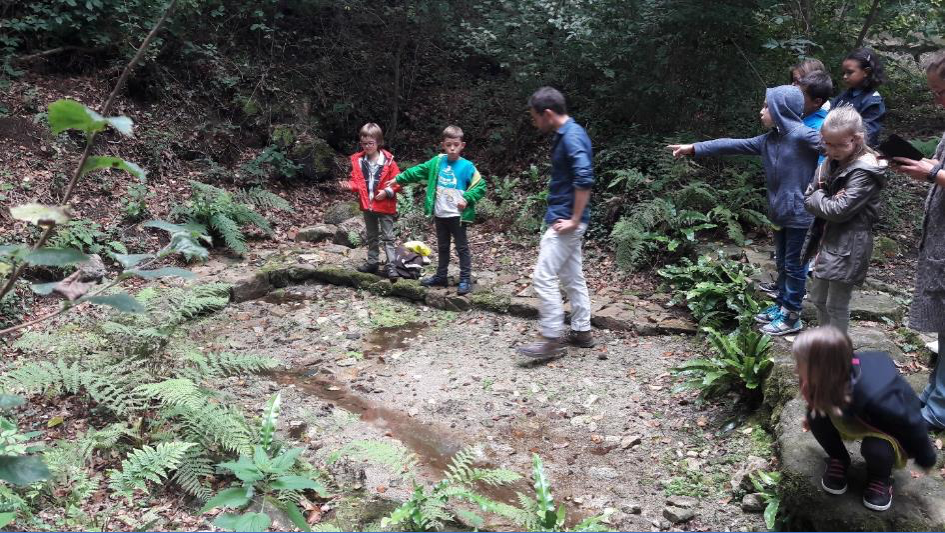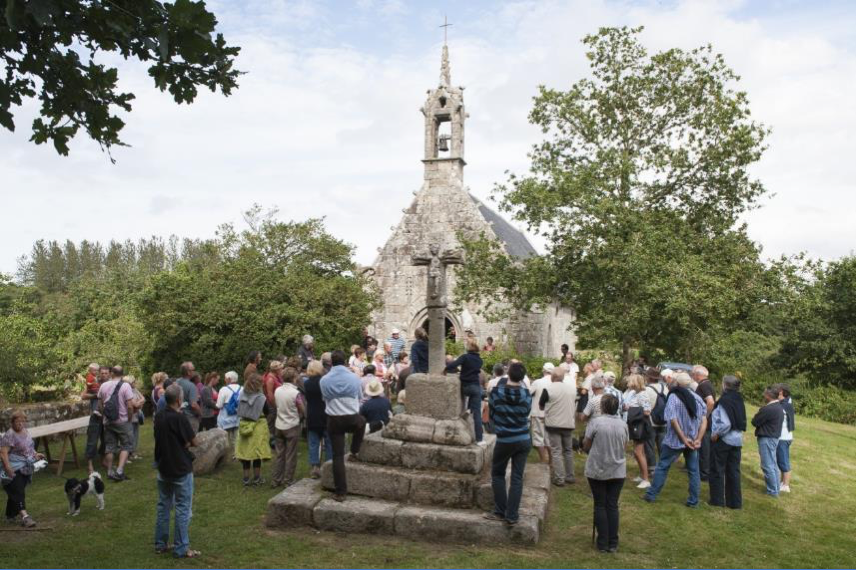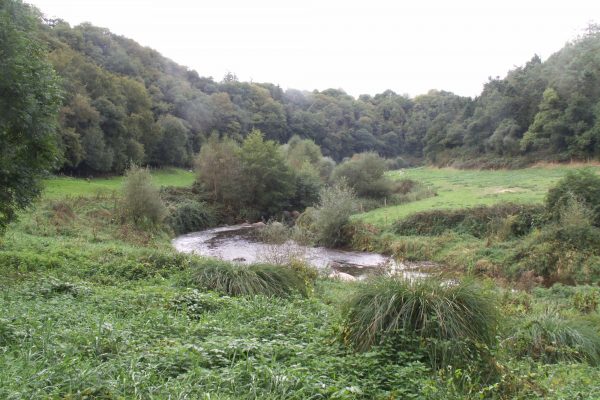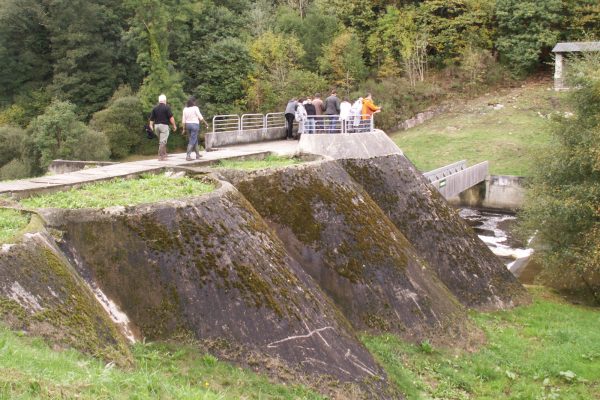©Marc Bonenfant

Introduction
 The Léguer is a small river in Brittany, France, which flows along 58 km into the English Channel after passing through the town of Lannion. The 280 km² catchment area consists of a narrow, entrenched granite valley. The river is historically one of the region’s most renowned salmon rivers. The Vallée paper mill, one of the biggest industrial units in the area, was located on the banks of the Léguer at Belle-Isle-en-Terre (see map). Between 1920 and 1922, a dam was built across the Léguer to supply the mill with electricity. Providing a livelihood for over a thousand people, the mill and dam symbolised the progress and prosperity of the region (source: www.onema.fr).
The Léguer is a small river in Brittany, France, which flows along 58 km into the English Channel after passing through the town of Lannion. The 280 km² catchment area consists of a narrow, entrenched granite valley. The river is historically one of the region’s most renowned salmon rivers. The Vallée paper mill, one of the biggest industrial units in the area, was located on the banks of the Léguer at Belle-Isle-en-Terre (see map). Between 1920 and 1922, a dam was built across the Léguer to supply the mill with electricity. Providing a livelihood for over a thousand people, the mill and dam symbolised the progress and prosperity of the region (source: www.onema.fr).
The 15 m tall dam created a reservoir with a length of approximately 1.5 km. Despite the presence of a fish pass, it was difficult for salmon to cross and the dam also formed an impassable obstacle for eels. In 1965, the paper mill went out of business. The dam then supplied electricity to EDF, but when it was time to renew the licence, the dam was in poor condition and there was limited economic interest. The former licence-holder decided not to renew its application and the dam then became a public asset with associated responsibility for maintenance (source: www.onema.fr).
© Corinne Ronot – ERN, ©Marc Bonenfant
The dam, the river and the reservoir had 3 different problems:
1. River connectivity and fish populations.
The river was fragmented due to the large dam, and the natural flow of water, sediment and energy was disturbed. This was reflected negatively in the river habitats. Migratory fish were negatively impacted due to the dam, and the salmon and eel populations were limited;
2. Water quality and sediment trap.
The dam caused sediment trapping and the reservoir had silted up significantly. This resulted in a shallow and enriched reservoir that suffered from algal blooms in the summer;
3. Safety and maintenance costs.
The risk of the dam failing became a growing concern. Due to the lack of maintenance, the dam started cracking and became a direct threat to houses and properties situated downstream. Following significant flooding in the winter of 1995, the government announced plans to dismantle the dam on the grounds of public safety.

Kernansquillec dam after removal, 2009 ©Corinne Ronot-ERN
“The demolition permit was granted
Source: www.onema.fr
by the prefect on 17 September 1996”
Results
Fish populations
No pre-works monitoring was carried out, however during the works, water quality was continuously monitored and the results were regularly released to the public. After removal of the dam, studies of invertebrates were carried out upstream and downstream. The collection of fish data allowed evaluation of re-colonisation by migratory species and showed re-colonisation of at least 27 km of river with improved populations of salmon, sea lamprey and eel. However, it is clear that due to other structures downstream of the site of the Kernansquillec dam, fish population recovery has not yet reached its full potential.
Overall, the visible but unquantified results of the different elements (water quality, ecological condition etc.) are highly satisfactory. The site has been rehabilitated, and five years after the drainage of the reservoir, the banks stabilised and the river re-established its meanders, including the restoration of its natural flow and gradient (www.onema.fr).
River restoration
The removal of the Kernansquillec Dam was the beginning of various actions to restore the ecological and chemical quality of the water, including removal of further weirs. Since actions have been completed, the Léguer river has recently received the prestigious “Wild River” label. This certifies rivers which are close to their natural state – less than 1% of rivers in France are in this state (source: www.ern.org).
Water Framework Directive
The water quality of the Léguer river is managed by the Agence de l’eau Loire-Bretagne (Loire-Brittany Water Agency). Using WFD methodology, as of 2013, the river was considered to have ‘good’ ecological status. This was achieved through removal of the dam. The chemical water quality is also excellent and was not negatively affected by sediment dispersal following dam removal.
Communities and economic development
Initially, local residents reacted quite negatively to the dismantling of the dam, which they considered to be destroying a reminder of past industrial heritage. The Léguer Valley Association then decided to rehabilitate and enhance the former dam and mill site.
Public relations announcements on the project’s progress ensured that local residents would remain informed and would accept and take ownership of the project. Large numbers of visitors now come to see the Kernansquillec site.
Since the removal of the dam, the site has become popular with canoeists and the general public (www.onema.fr).

The restored Léguer River (source: www.vallee-du-leguer.com)

Communities involved in the development of the valley. (source: www.vallee-du-leguer.com)

Communities involved in the development of the valley. (source: www.vallee-du-leguer.com)
- Name: Kernansquillec dam
- Location: Léguer river, Brittany, northwest France
- Type of dam: Hydropower station
- Measurements: 15 m high; 10 m wide; impoundment 1.5 km long
- Aims: – River restoration, improve river connectivity and re-establish fish migration routes – Improve water quality. The water quality in the reservoir was poor (eutrophication) and filling up with sediment. – Avoid risks of dam collapsing and maintenance costs.
- Year of removal: 1996– 2001





